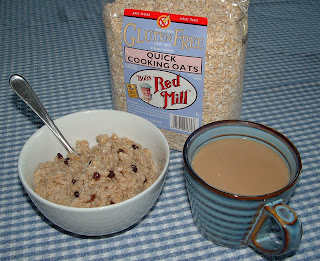We’ve been doing the GFCF diet at our house for about 3 years now. I resisted the diet. A lot. I practically acted like a 2-year old having a tantrum. Picture a grown woman with a whiny voice saying things like, “I don’t wanna! It will be too haaaard!” Well, I may not have said those exact things out loud, but I certainly thought them loudly in my head!
Fast forward to the present and I can tell you without a shadow of a doubt, the diet made a HUGE and very positive impact on my kiddos. My youngest son is now talking as a result of getting rid of foods that were inflammatory to his little body. He’s a different person, and I have the diet to thank. I did the diet change cold turkey at our house, which I don’t always recommend. It was hard. Hellish, in fact. However, if you are thinking that your kid might benefit from the diet, it’s worth a try. If nothing else, it can’t hurt.
Let me tell you, it can be a challenge to create meals without things like: gluten (wheat, rye, barley, etc.), casein (milk, cheese, yogurt, etc.), soy (the go-to milk substitute), egg (almost always necessary in the absence of gluten), and other pesky things like citrus, banana, pineapple, and nuts. These were the things we were told to avoid. My husband and I decided the best way to help the boys was to make our home allergy-free. That means we eat what they eat!
Well, not always. Confession time… Sometimes my hubby and I wait until certain little boys are in their beds for the night, and then we cheat with forbidden things like real dairy ice cream or pizza with a regular crust and regular cheese. Shhh! It’s our little secret, K?
Anyway, over the past 3 years I’ve gotten pretty darn good at allergy-free cooking. There have been some seriously tasty delights that have come out of my kitchen. When you have a husband who is vocal about how he cannot tolerate the idea of fake cheese and such, it’s always rewarding when he can hardly wait to get his second helping of something you put on the table. The boys, however, are not always as enthused. They get stuck in food ruts and don’t prefer a diverse menu. They would rather eat the same thing every day. To be honest, it can be easier to give in to their preferences when you know they will eat heartily without complaint.
These food ruts bring me to the question I have today. To use oats or not? This is actually a common debate for folks on a gluten-free diet. What I have learned through all of my research on the topic is that unless you have a true oat allergy, oats should be okay for you to digest. However, those oats must be certified as gluten-free. In the typical scenario, oats are grown close in proximity to wheat. Then, they are often processed in the same factory as wheat. Both of these situations cause contamination of the oats, rendering them unsafe to a person with celiac disease or who is allergic/intolerant to gluten.
It is important to find gluten-free oats that have been grown separately from wheat and processed in a gluten-free facility. This is why I love Bob’s Red Mill. Not only do I like their products because they are made in my old hometown, they have a wonderful variety of certified gluten-free items using old-fashioned processing techniques. They even have great gluten-free recipes on their site, here.
So, this morning when my son asked for something different than his typical breakfast fare, I jumped at the chance to try some of my Bob’s Red Mill certified gluten-free oats. I made him some oatmeal with cinnamon and dried currants. It was flavorful and sugar wasn’t even necessary. And, it’s a LOT cheaper than buying the instant oatmeal packets, which are extremely hard for me to find gluten-free. It only took a couple of minutes to prepare, and he loved it. He even told me that he’d like to have my oatmeal again on the weekend so that he can show his dad that he’s eating something new. Love that! Anything to add variety! I’m sure I’ll need some new ideas to keep things interesting, so please share your favorite way to make oatmeal by adding a comment below. It’s much appreciated.

